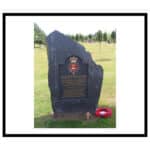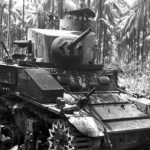Themes
Explore the Museum through its thematic galleries which move from the present to the past.
The themes are:
The Regiment Today
![]() Discover what every day life in the Regiment is like. Find out about the latest deployments, training, ceremonial duties and sporting achievements as well as the realities of being a soldier in the Queen’s Royal Hussars.
Discover what every day life in the Regiment is like. Find out about the latest deployments, training, ceremonial duties and sporting achievements as well as the realities of being a soldier in the Queen’s Royal Hussars.
Preparing for War
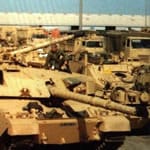 Training and reality in Afghanistan and Iraq and the Gulf War.
Training and reality in Afghanistan and Iraq and the Gulf War.
The Hussars are trained to be the shock troops of the British Army using their armoured presence and superior firepower to overwhelm the enemy.
Why not find out about ‘Ferret Force’, which operated during the Gulf War. providing close protection to RHQ QRIH.
But the reality which faces them also requires ingenuity, determination and quick thinking.
The recent deployments to Afghanistan, and Iraq illustrate the innate flexibility of the modern Hussars which is reflected in their training.
Keeping the Peace
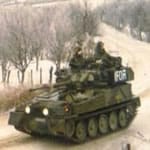 Northern Ireland, Bosnia, Kosovo, Aden, Korea, Malaya and the Cold War.
Northern Ireland, Bosnia, Kosovo, Aden, Korea, Malaya and the Cold War.
Despite their awesome combat ability the Hussars have frequently been called upon to undertake the role of Peace Keeper for the United Nations or the Nation.
They have had to act with restraint to maintain peace and restore order in sensitive situations such as Bosnia, Kosovo, Northern Ireland and Aden.
Meeting Challenges
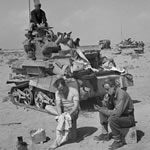 WW1 and 2 in France, Germany, Italy, North Africa, Burma, Crete, Greece, Mesopotamia and the transition from Horse to Tank.
WW1 and 2 in France, Germany, Italy, North Africa, Burma, Crete, Greece, Mesopotamia and the transition from Horse to Tank.
Over the last 70 years the Hussars have had to deal with many types of enemy in a wide range of environments. From the frozen mountains of Korea to the steaming jungles of Malaya and the open plains of central Europe they have faced everything from sophisticated armoured divisions to elusive guerrilla fighters.
The Hussars have always adapted their tactics and training to enable them to respond effectively.
World War 2
The 3rd, 4th, 7th and 8th Hussars were engaged throughout the Second World War across battlefronts ranging from the deserts of North Africa to the jungles of Burma, the mountains of Italy and the bocage of Normandy.
In this gallery stories of individual heroism intersperse regimental flexibility and determination in the face of extreme challenges across the globe.
Horse to Tank
The Hussars changed from horse to tank just before the outbreak of the second world war.
The first armoured vehicles were the comparatively primitive MkV1B and there was much to learn as the horse was relegated to the past.
Discover what the then Commanding officer of the 3rd Hussars; Lt Col RR de C Grubb MC had to say on the matter of the Mechanisation of Cavalry in 1936.
Our displays explain the adaptations which had to be made by the Hussars and the positive and negative effects of the change.
World War 1
The 3rd, 4th and 8th Hussars fought in France, on the Western Front, throughout the War.
In 1914 and 1918 they fought as cavalry using the speed of their horses to reach the scene of the action whether it be in retreat or advance.
In the intervening years they frequently found themselves in the trenches or being held for the great breakthrough which never occurred.
The 7th fought fierce battles in Mesopotamia against the the Turks.
In both theatres of war the dangers from terrain and environment were frequently presented as great as those provided by the enemy.
Weapon Development
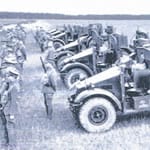 The weapons available determine how the soldier fights.
The weapons available determine how the soldier fights.
The evolution of sword, carbine and tank and anti-tank guns has been critical to the success or otherwise of the Hussar in the field and the displays explain the practical effects of weapon development.
Why not take a look at the armoured fighting vehicles that have been used by the Regiment.
Also discover the various types of reconnaissance vehicles that the Regiment has used.
Churchill. The Greatest Hussar
The Museum aims to tell the story of Churchill as a fighting soldier in India, the Sudan and South Africa as well as his close links to the Regiment throughout his lifetime.
Find out about Winston Churchill’s state funeral and how the Regiment was involved.
Speeches
Early Years
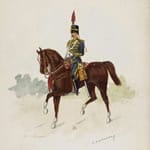
Originally in the 17th Century the regiments were founded as dragoons or mounted infantry.
The idea was that they rode to the scene of action and then dismounted and fought on foot. in practice it was soon found that they were more effective on horseback and they then evolved into light cavalry or hussars.
Why not discover what it was like to “take the Queen’s shilling” and enlist in the ‘The Duke of Connaught’s Canaries’.
Their role was intended to be reconnaissance and scouting but their speed and mobility soon saw them in the thick of the action.
The Regimental Battle Honours are covered by displays on Dettingen, The Sikh Wars, The Indian Mutiny, The Peninsular War, Waterloo and The Crimean War including The Charge of the Light Brigade.
Creative Expression
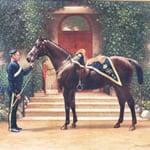 This part of the Museum is devoted to the art of the Hussars.
This part of the Museum is devoted to the art of the Hussars.
This can be found in many forms: photographs, pictures and paintings by and of Hussars as well as uniforms, music and musical instruments.
Find out what it was like to be a young trumpeter in the 4th Hussars whilst under training.
Why not take time to discover the many musical instruments that are part of our online collection.
Changing Times
 Soldiers have families and the position of these have changed over the centuries.
Soldiers have families and the position of these have changed over the centuries.
We contrast the situation of the past with that of the present.
Discover out about Fanny Duberly, the wife of Captain Henry Duberly, Paymaster to the 8th Hussars, who’s avowed intention it was to accompany her husband throughout The Crimean Campaign.
Why not find about The untold story of women in the Crimean War, and the changes that happened throughout The Crimean Campaign.
The role of women has been particularly transformed with the first women to join the current Regiment as fighting soldiers.
Courage and Sacrifice
We aim to tell the visitor about each medal, the campaign to which it relates and the person to whom it was awarded.
Why not view our Gallantry Awards.
Life Overseas
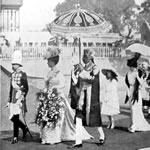 Daily life in India during the time of the Raj was photographed by General and Lady Poore.
Daily life in India during the time of the Raj was photographed by General and Lady Poore.
We have their camera and the fascinating insight provided by their extensive albums.

